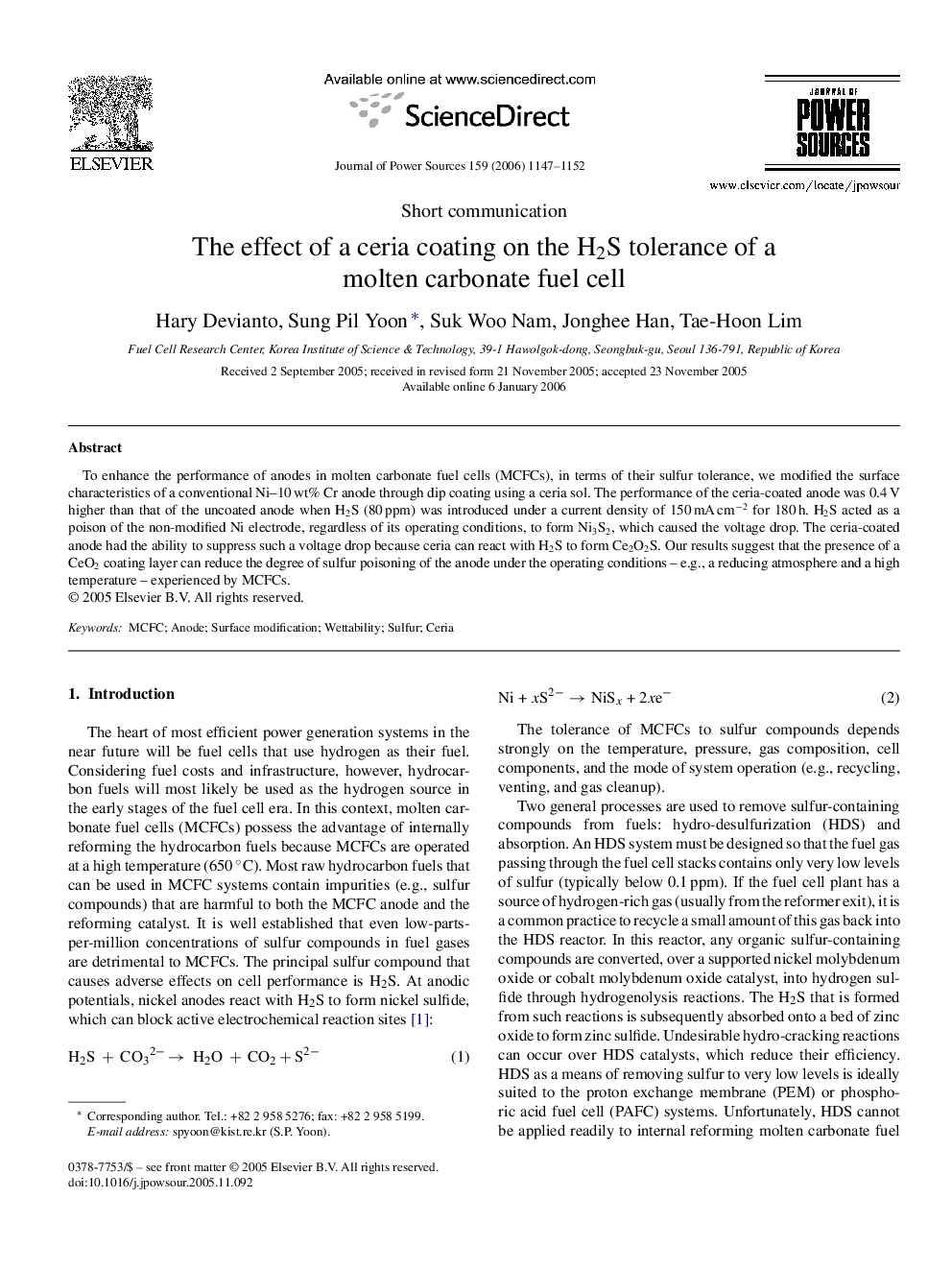| Article ID | Journal | Published Year | Pages | File Type |
|---|---|---|---|---|
| 1287270 | Journal of Power Sources | 2006 | 6 Pages |
To enhance the performance of anodes in molten carbonate fuel cells (MCFCs), in terms of their sulfur tolerance, we modified the surface characteristics of a conventional Ni–10 wt% Cr anode through dip coating using a ceria sol. The performance of the ceria-coated anode was 0.4 V higher than that of the uncoated anode when H2S (80 ppm) was introduced under a current density of 150 mA cm−2 for 180 h. H2S acted as a poison of the non-modified Ni electrode, regardless of its operating conditions, to form Ni3S2, which caused the voltage drop. The ceria-coated anode had the ability to suppress such a voltage drop because ceria can react with H2S to form Ce2O2S. Our results suggest that the presence of a CeO2 coating layer can reduce the degree of sulfur poisoning of the anode under the operating conditions – e.g., a reducing atmosphere and a high temperature – experienced by MCFCs.
